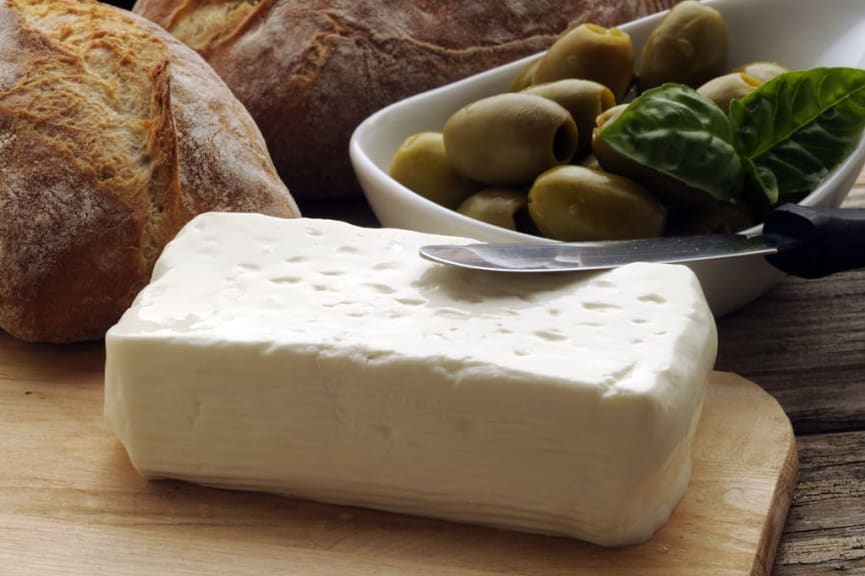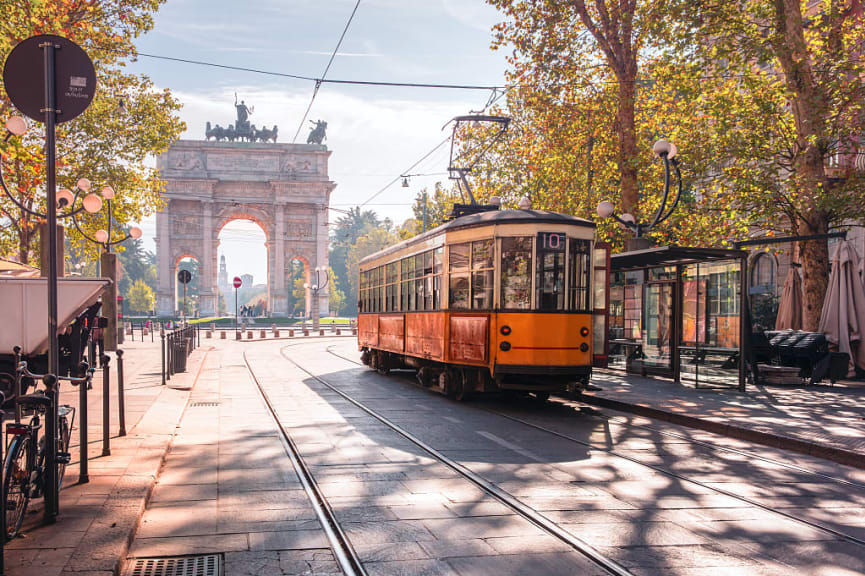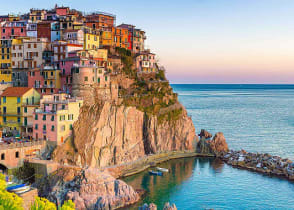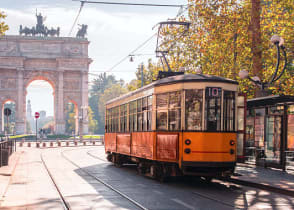4 Best Dishes to Try While on Vacation in Milan

Restaurants lining Naviglio Grande Canal at dusk in Milan, Italy
The four meals and dishes of Milan that you should try during your trip characterizes the culinary influences of lavish sovereigns that ruled over a historic center of cultural exchange. Milan’s position as the capital of the Lombardy region has brought a variety of flavorful cuisine and a mixture of cultures into the center of the city’s gastronomy, dating back to the Celtic kitchen of pre-Rome while remaining renowned for world-class restaurants and cafés. Milan is filled with foodies that celebrate the heritage of local cuisine with a focus on forward-thinking techniques while respecting local customs.
1. Valpadana Provolone DOP

Production of Valpadana Provolone
Valpadana Provolone is a semi-hard cheese with a firm, grainy texture and high fat content. The cheese is aged for at least three months for a sweet flavor but develops a spice when matured for up to six months. The cheese has a pleasant and slightly smoky aroma. When smoked, Valpadana Provolone has the specification of affumicata. The cheese is made from cow’s milk and is protected by the Denominazione Origine Protetta (DOP), safeguarding the traditional preparation, process, and production of the cheese while also specifying the areas of Europe in which the cheese can be made.
2. Stracchino DOP

Stracchino
Stracchino is a soft, creamy cheese that is made from cow’s milk. It has a slightly sour flavor with notes of fresh milk in the taste and aroma. The name derives from the cows whose milk farmers use to make the cheese after returning to the plains from the summer in the mountain pastures. The simple ingredients of pasteurized milk, cream, lactic ferments, salt, and rennet make the cheese. The Denominazione Origine Protetta (DOP) label safeguards the cheese by clearly defining the customary preparation, process, and production, in addition to the area in Europe in which the cheese is made.
3. Bagnet Verd

Bagnet Verd
The typical green sauce of Milan contains parsley, anchovies, and salt. It is served with boiled meats and seasoned with extra ingredients like garlic, olive oil, wine vinegar, egg yolk, and capers. The name derives from the color that was taken from the main ingredient, parsley. The sauce derives from the 19th century in the court of Carlo Alberto King of Sardinia, who preferred the sauce to flavor his meat. Chefs in Milan traditionally use stale bread and egg yolk to thicken the sauce, which also adds to the dynamic flavor.
4. Cotoletta alla Milanese

Cotoletta alla Milanese
The veal cutlet fried in clarified butter is a traditional and popular dish of the city that can rival the famous milanese, often accompanied by prosciutto and a sauce of lemon and parsley. The type of meat represents the accessibility of the ingredients cultivated on the plains around Milan Province, leading into the slopes of the Apennine and Alps of the greater Lombardy region. The type of meat used in Milanese cuisine is also indicative of the most accessible parts of the animal, reflecting the divergent prosperity of Milanese culture through time.
How to Plan Your Vacation to Milan

Vintage tram in Milan, Italy
The local ingredients and dishes of Milan reflect the province’s wealth through the millennia with a particular gastronomic heritage that captures the spirit of the city. Cooks from Spain, France, and Austria added to the rich culinary techniques of the city accentuated by an influx of southern Italian immigrants that shifted the balance of culinary custom. Our Italy Tours has more inspiration for your culinary trip or discover how you can enjoy your personalized vacation with Zicasso’s Italy Travel Guide. Speak with an Italy travel specialist by filling out a Trip Request or by calling our team at 1-888-265-9707.
Life-Enriching Travel Designed Just for You
- 1
Trips curated by the world’s top destination experts
- 2
Concierge-level service leading up to and during your trip
- 3
Unique, exclusive experiences and insider access





